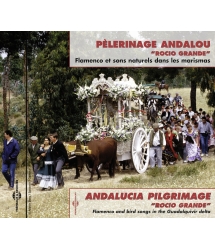- Our Catalog
- Philosophy
- Philosophers of the 20th century and today
- History of Philosophy (PUF)
- Counter-History and Brief Encyclopedia by Michel Onfray
- The philosophical work explained by Luc Ferry
- Ancient thought
- Thinkers of yesterday as seen by the philosophers of today
- Historical philosophical texts interpreted by great actors
- History
- Books (in French)
- Social science
- Historical words
- Audiobooks & Literature
- Our Catalog
- Jazz
- Blues
- Rock - Country - Cajun
- French song
- World music
- Africa
- France
- Québec / Canada
- Hawaï
- West Indies
- Caribbean
- Cuba & Afro-cubain
- Mexico
- South America
- Tango
- Brazil
- Tzigane / Gypsy
- Fado / Portugal
- Flamenco / Spain
- Yiddish / Israel
- China
- Tibet / Nepal
- Asia
- Indian Ocean / Madagascar
- Japan
- Indonesia
- Oceania
- India
- Bangladesh
- USSR / Communist songs
- World music / Miscellaneous
- Classical music
- Composers - Movie Soundtracks
- Sounds of nature
- Our Catalog
- Youth
- Philosophy
- News
- How to order ?
- Receive the catalog
- Manifesto
- Dictionnary











- Our Catalog
- Philosophy
- Philosophers of the 20th century and today
- History of Philosophy (PUF)
- Counter-History and Brief Encyclopedia by Michel Onfray
- The philosophical work explained by Luc Ferry
- Ancient thought
- Thinkers of yesterday as seen by the philosophers of today
- Historical philosophical texts interpreted by great actors
- History
- Books (in French)
- Social science
- Historical words
- Audiobooks & Literature
- Our Catalog
- Jazz
- Blues
- Rock - Country - Cajun
- French song
- World music
- Africa
- France
- Québec / Canada
- Hawaï
- West Indies
- Caribbean
- Cuba & Afro-cubain
- Mexico
- South America
- Tango
- Brazil
- Tzigane / Gypsy
- Fado / Portugal
- Flamenco / Spain
- Yiddish / Israel
- China
- Tibet / Nepal
- Asia
- Indian Ocean / Madagascar
- Japan
- Indonesia
- Oceania
- India
- Bangladesh
- USSR / Communist songs
- World music / Miscellaneous
- Classical music
- Composers - Movie Soundtracks
- Sounds of nature
- Our Catalog
- Youth
- Philosophy
- News
- How to order ?
- Receive the catalog
- Manifesto
- Dictionnary
RAPHAËL FAYS
RAPHAËL FAŸS
Ref.: FA8577
Label : Frémeaux & Associés
Total duration of the pack : 40 minutes
Nbre. CD : 1
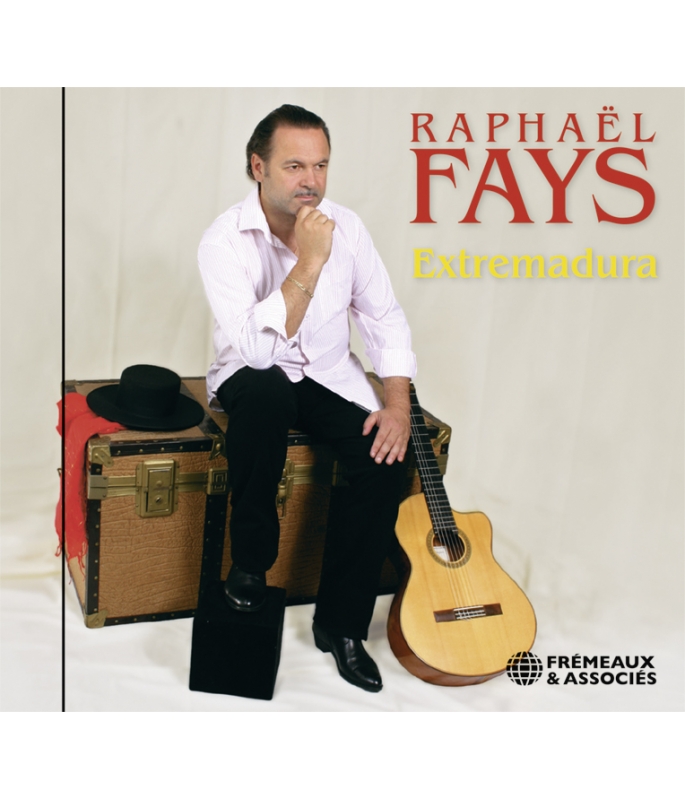
RAPHAËL FAYS
RAPHAËL FAYS
“Extremadura” is the second album that Raphaël Faÿs, whose background is in gypsy jazz and classical music, has devoted to Andalusia. Raphaël’s guitar technique is faultless and his feeling for melody a rare gift indeed, which serves him well here in this demonstration of his unique flamenco style — he plays the music using a pick. This new album shows all the virtuosity, passion and perfectionism that have made Raphaël Faÿs an unavoidable figure not only on the flamenco scene but also in all music. Augustin BONDOUX / Patrick FRÉMEAUX
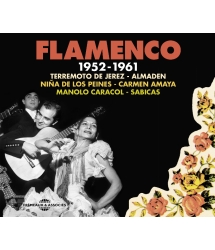
TERREMOTO DE JEREZ - EL NINO DE ALMADEN • NIÑA DE LOS...
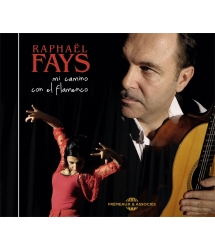
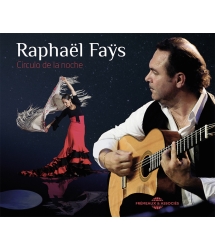
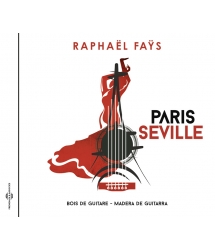
BOIS DE GUITARE / MADERA DE GUITARRA




-
PisteTitleMain artistAutorDurationRegistered in
-
1ExtremaduraRaphaël FaysRaphaël Fays00:03:302009
-
2Primera buleriaRaphaël FaysRaphaël Fays00:03:202009
-
3La hija de la arenaRaphaël FaysRaphaël Fays00:05:052009
-
4RaquelitaRaphaël FaysRaphaël Fays00:03:452009
-
5Ranger rumbaRaphaël FaysRaphaël Fays00:03:092009
-
6Cuando baila la lunaRaphaël FaysRaphaël Fays00:02:202009
-
7La marquesaRaphaël FaysRaphaël Fays00:04:322009
-
8Solea para sabicasRaphaël FaysRaphaël Fays00:03:362009
-
9ColombianaRaphaël FaysTraditionnel00:07:192009
-
10Ballade a TyannaRaphaël FaysRaphaël Fays00:04:102009
FA8577
Raphaël
FAYS
Extremadura
Extremadura est le deuxième album que Raphael Fays, issu du jazz manouche et du classique, consacre à la noble musique andalouse. Paré d’une technique irréprochable et d’un sens rare de la mélodie, le guitariste parfait ici son style unique de flamenco au médiator. On retrouve sur cet album toute la virtuosité, la passion et le perfectionnisme qui font de Raphael Fays un acteur incontournable de la scène flamenca et de la musique en général.
Augustin BONDOUX / Patrick FRÉMEAUX
“Extremadura” is the second album that Raphaël Faÿs, whose background is in gypsy jazz and classical music, has devoted to Andalusia. Raphaël’s guitar technique is faultless and his feeling for melody a rare gift indeed, which serves him well here in this demonstration of his unique flamenco style — he plays the music using a pick. This new album shows all the virtuosity, passion and perfectionism that have made Raphaël Faÿs an unavoidable figure not only on the flamenco scene but also in all music.
Augustin BONDOUX / Patrick FRÉMEAUX
Raphaël Faÿs guitare flamenca solo / guitarra flamenca
Tito guitare flamenca / guitarra flamenca
Claude Mouton contrebasse / contrabajo
Laurent Zeller violon / violín
José Palomo percussions / percusiones
Raquel Gomez danse / baile
Alejandro Gimenez chant / cantaor
Clara Tuleda chant / cantaora
Raphaël Faÿs est un artiste singulier non seulement dans la sphère du « jazz manouche1 » (dont il fut, faut-il le rappeler, le premier artisan du « renouveau » dès le milieu des années 70) mais aussi dans le monde de la guitare acoustique. Raphaël Faÿs a exploré avec avidité trois domaines musicaux très spécifiques. D’abord le style de Django, l’incontournable référence. Ensuite, la musique classique et rien en ce domaine concernant les œuvres pour guitare ne lui est étranger. Avec la modernisation de l’instrument par Antonio Torres vers la fin du XIXe siècle, l’Espagne a définitivement supplanté l’Italie et la France dans le domaine de la guitare. Se sont alors succédées plusieurs générations d’immenses compositeurs et de redoutables interprètes souvent habiles théoriciens et auteurs de méthodes précieuses. Dioniso Aguado, Julian Arcas, Francisco Tarrega, Emilio Pujol, Miguel Llobet, Fernando Sor, Andres Segovia, Narciso Yepes. L’étude avide et la fréquentation acharnée de ces génies de la guitare, sans oublier les œuvres transcrites pour guitare de compositeurs comme Isaac Albeniz, Enrique Granados, Joachin Turina, Joaquim Rodrigo, ont mené Raphaël Faÿs tout naturellement en Espagne et bientôt en Andalousie. Sa rencontre avec l’immense Paco de Lucia qui lui prodigua des encou-ragements fut décisive dans l’immersion totale qu’opéra Raphaël Faÿs dans le monde du flamenco pendant ces 22 dernières années. Ce n’est qu’à l’automne 2005 qu’il commença à soulever un coin du voile sur quelques aspects de son travail andalou. L’album Gypsy & Classic propose alors six de ses premières compositions dans cette esthétique : Fandango (Los Arcos) / Primera Bulérias / Maître Paco Alégrias / Granaïma à Laruel / Buléria Andalouse / Soléa à Manzanas.
Définitivement adopté comme un des grands acteurs de la scène flamenca, Raphaël Faÿs publie en 2007 l’album Andalucia, qui marque définitivement de son empreinte le répertoire flamenco. Son approche sensible liée à sa technique particulière au médiator donne à ses compositions un caractère généreux à la fois implacable et chaleureux. Raphaël trace avec détermination son sillon quelque part entre ceux de Ramon Montoya et de Sabicas ses deux maîtres absolus. Les leçons qu’il en tire, de Montoya, la redoutable simplicité et de Sabicas, la souplesse et l’étonnante agilité, sont mises au service d’une musicalité inédite et toute personnelle.
Rares sont les musiciens qui, à la manière de Raphaël Faÿs, auront su investir des champs musicaux aussi variés qu’exigeants avec la même conviction, la même probité et le même bonheur. Plus que la performance, c’est l’humanité et la générosité de la démarche qu’il convient de saluer.
Alain Raemackers
Après vingt deux années de travail, motivé par une forte passion pour le flamenco et pour faire suite à l’album Andalucia paru en 2008, je propose aujourd’hui avec Extremadura, l’expression d’un flamenco qui m’est propre. Je le joue au médiator, comme disent les aficionados en Espagne « à la Poua », ou plectre d’origine. Mes origines de guitariste « Reinhardtien » m’ont particulièrement servies.
Pour cet album, j’ai réuni des gens que j’aime et qui ont accompli un excellent travail. Chaque fois, notre association s’est faite simplement et tout naturellement après une rencontre. Qu’il s’agisse du violoniste Laurent Zeller, du guitariste flamenco Tito, du contrebassiste Claude Mouton, du percussionniste José Palomo, de la danseuse Raquel Gomez, de la chanteuse Clara Tuleda ou du chanteur Alejandro Gimenez, tous ont fait preuve d’un sens artistique extraordinaire. Je vous laisse juge du résultat en souhaitant qu’en écoutant cet album, vous preniez le même plaisir que j’ai eu à le réaliser.
Encore un grand bravo à tous !
Me he pasado un gran momento con vosotros.
Ce disque est dédié à l’Espagne et à tous mes amis espagnols qui m’ont aidé pendant des années à accomplir cette musique.
Muchas Gracias !
Raphaël
Cet album représente pour Raphaël Faÿs une avancée très importante dans son aventure avec le flamenco, pour ne pas dire avec l’Espagne, un pays qu’il affectionne particulièrement.
Son style de jeu au médiator le différencie de tous les autres guitaristes flamencos. C’est en compagnie du talentueux guitariste Daniel Manzanas et du chanteur-bassiste Pablo Gilabert, deux flamencos, qu’il va développer sa musique et composer ses propres pièces ou danses, Bulérias, Alégrias, Fandanguos, etc.
Dire de Raphaël qu’il se place dans la lignée de Paco de Lucia pourrait bien le gêner, il respecte trop ce maître absolu pour accepter d’être comparé à lui. Si Raphaël est originellement un descendant naturel de Django Reinhardt, son engouement est tout aussi fort pour des guitaristes flamencos comme Sabicas, Manolo Sanlucare, Vicente Amigo, qu’il admire sans réserve. Raphaël ne recherche pas la comparaison.
Le flamenco est pour Raphaël Faÿs une passion qu’il veut partager avec le public visiblement comblé après chaque prestation. Indifférent aux modes et aux étiquettes, Raphaël poursuit son chemin en continuant d’affirmer son propre style !
Patricia
1 Précisons ici le sens de cette appellation équivoque : comme le disait Babik Reinhardt et comme Raphaël Faÿs ne cesse de le répéter : il n’y a pas de « jazz manouche », mais un style de jazz créé par Django Reinhardt, qui a fait de nombreux émules dans la sphère du jazz. Plusieurs musiciens issus de la communauté manouche, mieux que tout autre, s’en sont fait une spécialité qui vaut aujourd’hui à ce style de jazz son appellation « manouche », Raphaël parle, lui, sans ambiguïté de « Style Django ».
Raphaël Faÿs is a distinctive artist not only in the domain of “Manouche jazz1” (where, in case readers need reminding, he was the instigator of the so-called revival of the genre that began in the mid-seventies), but also in the world of acoustic guitar. Raphaël Fays has carried out endless explorations in three specific fields of music: first, Django’s style, the absolute, quintessential reference; secondly, classical music, where nothing concerning works for guitar holds any secrets for him. With the modernisation of the instrument by Antonio Torres towards the end of the 19th century, Spain overtook Italy and France once and for all in the guitar world. Several generations of immense composers and illustrious performers, often clever theorists and authors of valuable methods as well, then followed one another: Dioniso Aguado, Julian Arcas, Francisco Tarrega, Emilio Pujol, Miguel Llobet, Fernando Sor, Andres Segovia, Narciso Yepes. Raphaël Fays studied the works of these men of genius avidly, spending as much time as possible with them, as well as poring over others transcribed for guitar by composers such as Isaac Albeniz, Enrique Granados, Joachin Turina, Joaquim Rodrigo, all of which eventually led him first to Spain, then Andalusia in particular. His encounter with the great Paco de Lucia, who gave him generous encouragement, was a turning point – Raphaël Fays plunged wholeheartedly into the world of flamenco, where he’s remained for the last 22 years. It was only in autumn 2005 that he revealed the first outward signs of his Andalusian work, with the album Gypsy & Classic and six of his earliest pieces composed according to flamenco aesthetics: ‘Fandango’ (Los Arcos) / ‘Primera Bulérias’ / ‘Maître Paco Alégrias’ / ‘Granaïma à Laruel’ / ‘Buléria Andalouse’ / ‘Soléa à Manzanas’.
Raphaël Fays now became one of the accepted actors – indeed, a major one – on the flamenco scene, then released his next album, Andalucia, that left a real mark on the flamenco repertoire. His sensitive approach linked to his special technique with the plectrum brought warmth, rigour and generosity to his interpretations of his own compositions. Raphaël made a place for himself somewhere in the wake of Ramon Montoya and Sabicas, both his revered masters. The lessons he learned from them – tremendous simplicity from Montoya, fluidity and amazing agility from Sabicas – he now applied to his own style, already highly personal with unusual musicality.
Musicians who have tackled such varied and demanding musical domains as Raphaël Fays has done are few and far between; and even more rare are the passion, probity and sheer happiness such as he’s brought to his musicianship. More than his performance, what he shows and what we as listeners should hail is the generous humanity of his approach.
Alain Raemackers
1 Let’s be clear here about what this ambiguous term really means: as Babik Reinhardt used to say, and Raphaël Fays is constantly repeating – There’s no such thing as “Manouche jazz”, there’s just the jazz style created by Django Reinhardt that has produced so many imitators in the jazz world. Several musicians from the Manouche community have made it their speciality with more success than others, and this is what has earned this style the descriptive term of “Manouche”, though Raphaël’s name for it is totally unambivalent; it’s the Django Style.
1 Extremadura 3’30
2 Primera buleria 3’20
3 La hija de la arena 5’05
4 Raquelita 3’45
5 Ranger Rumba 3’09
6 Cuando baila la luna 2’20
7 La marquesa 4’32
8 Solea para Sabicas 3’36
9 Colombiana 7’19
10 Ballade a Tyanna 4’10
Le titre 5 est dédicacé à Ranger Rumba, petite chienne adoptée par Raphaël, devenue sa fidèle compagne, qui vit des jours heureux avec son maître et fait avec lui de belles promenades en forêt.
Toutes compositions : Raphaël Faÿs sauf 9, traditionnel
